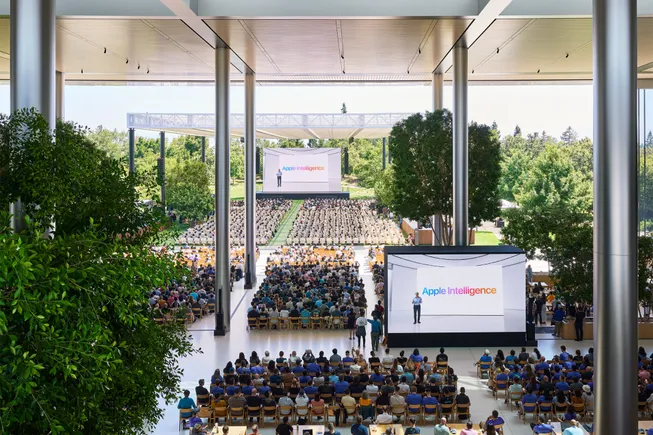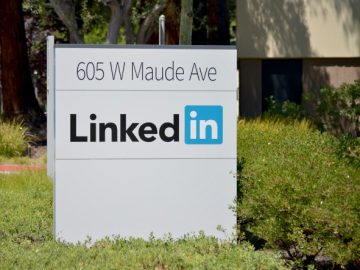Apple last week confirmed the date of its annual fall showcase, a flashy display where the tech giant in the past has unveiled its newest products and tech innovations. Slated for Sept. 9, this year’s event is expected to introduce consumers to Apple’s latest hardware, including the iPhone 16. Perhaps more notably, the company could also share updates on Apple Intelligence, its answer to the ongoing wave of excitement surrounding generative artificial intelligence (AI).
The event, announced with the tagline “It’s Glowtime,” follows Apple’s annual Worldwide Developers Conference in June where it first revealed Apple Intelligence, billing it as a personal intelligence system for iPhone, iPad and Mac that joins generative AI models with personal context to drive relevancy. The news, supplemented by the reveal of an OpenAI partnership, is a testament to the way in which the mobile landscape is poised for change as AI strategies graduate from concept to reality.
“I think everyone was just waiting for [Apple] to get in the game because there’s such an opportunity to reach so many people with the capabilities,” said Nicole Greene, vice president and analyst at Gartner. “When you think about the real premise of gen AI, democratization and accessibility is what’s surging the technology forward.”
The realization of Apple’s AI plans is likely to change the ways consumers engage with the technology — a level of influence the iPhone purveyor is no stranger to possessing, Greene added. Beyond Apple, a number of marketers this year have explored the potential for generative AI, whether for more mundane tasks like generating social copy and boosting commerce experiences or to support mobile-focused campaigns.
“All of our data and research is showing that this is the year of implementation, where businesses are taking this technology very seriously and trying to figure out how it can specifically either solve existing challenges, or move business forward with new opportunities,” said Greene.
Underneath the excitement, questions remain: What can be expected from the current regulatory environment? How can companies leverage the tech while staying brand safe, and what kind of experiences will already hesitant consumers value?
Social media’s growing potential
Within mobile marketing, social media remains a dominant channel — and one likely to be affected by AI’s rise. Social will account for nearly $242 billion of ad spend this year, per industry forecasts. Accordingly, key platforms like TikTok and Pinterest have sought to keep up with AI hype in hopes of differentiating themselves. In its latest earnings reports, Meta has provided a steady drip of updates on its AI capabilities, which it says are improving marketing performance.
For many advertisers, use cases for AI on social media have revolved around tasks like copy generation and ideation, Greene said, while functions like image generation have been less common. Many marketers have tested the tech in small waves and taken a more cautious approach to AI adoption for such tasks, said Jourdan Gariepy, associate vice president of optimization and innovation at Kepler. Those tests have tried to maintain a human touch to ensure accuracy, an approach the exec doesn’t expect will change.
“I think there’s always going to be a need for the marketing team to check that what we are putting out there is correct in what we want those brand guidelines to do,” Gariepy said.
“What we’ve found is, adding these additional changes to the images, we’ve seen that favorability has actually improved by a fifth.”
Michael Shaughnessy
Chief operating officer, Kargo
Leveraging AI for social copy versus for images or video — an area in which platforms like TikTok have begun to require disclaimers — also poses challenges in relation to transparency, Greene said, noting that it’s easier to label an image or video as being created with generative AI than it is for copy.
AI has additionally proven helpful for creating multiple versions of assets, like changing where a call to action appears or making tweaks based on locality, to offer a more personalized experience, said Michael Shaughnessy, chief operating officer at Kargo.
“What we’ve found is, adding these additional changes to the images, we’ve seen that favorability has actually improved by a fifth, or 20%,” said Shaughnessy.
A number of marketers have used AI to bolster their mobile-focused campaigns, from Sprite to Vitaminwater to Reebok. For Entropico, a global creative company that has worked with brands like Google and Samsung, AI is used most frequently in the pre-production and ideation stages, unless a brand is using the tech for the sake of producing an innovative campaign, said Joey Hunter, the company’s chief creative officer. The exec emphasized the tech’s limitations when it comes to matching the value of human creation.
“I love a little Bob Ross happy accident, and you can’t get those if you just run a prompt and it spits something out,” Hunter said.
AI for mobile commerce, apps
Mobile marketers could also find success with AI in boosting their capabilities for mobile commerce, an area in which U.S. retail sales will reach nearly $560 billion this year and account for 44.6% of total U.S. retail ecommerce sales, according to eMarketer. One area where generative AI is taking hold in commerce is for understanding the bridge between product description and the language consumers use to search for that product, Gariepy said.
However, some applications of AI could pose challenges to web experiences. For example, the tech could potentially lower the amount of traffic going to a brand’s site, reducing the size of its remarketing audience, Gariepy said. Functions like Google’s AI Overview feature, which uses generative AI to provide summaries at the top of search results, have stoked fears around lowered web traffic.
As AI use grows, Gariepy believes that a stronger focus on the holistic user experience will be key for understanding target consumers’ behavior, especially as cross-channel shopping experiences become more prevalent.
Also behind mobile’s ad spend, which is expected to cross $200 billion this year, are apps, which will make up 81.9% of spending. While 27% of app marketers rank adopting AI solutions as their top priority for 2024, 25% rank it as their top challenge, according to AppsFlyer.
“Brands still need to be really cautious about investment in apps given that the apps people [already] have will likely become more useful.”

Nicole Greene
Vice president and analyst, Gartner.
Generative AI could provide big opportunities for app marketers, according to Greene, particularly for assisting with the code to provide more personalized experiences and a smoother updating process. Several brands in recent years have sought partnerships with apps versus making one of their own, recognizing the difficulty in obtaining valuable real estate from consumers on their mobile devices. With AI, there may be a stronger incentive for brands to create their own apps.
“All of our research shows it’s really hard to get someone to leave a channel,” Greene said. “So as a brand, if your goal is to get someone to buy something, if they can do that seamlessly within your app enabled by AI, then it makes sense to have an app.”
In the same vein, it’s worth noting that existing apps can benefit just as greatly from the tech, the exec continued.
“Brands still need to be really cautious about investment in apps given that the apps people [already] have will likely become more useful,” she said.
Regulatory uncertainty fuels hesitancy
While AI has sparked curiosity in mobile marketers, uncertainty surrounds areas like brand safety and regulatory requirements. The E.U. AI Act takes a risk-based approach while executives in the U.S. are steeling themselves for what could be costly safeguards around data privacy and security in relation to AI.
There are also groups like the Content Authenticity Initiative, a cross-industry community aiming to make content authenticity and transparency accessible and scalable, that have marked a “huge step forward” regarding governance, Greene said. However, in an attempt to keep up with the tech’s rapid progress, the exec expects some responsibility to be passed off.
“I think the onus begins to shift toward the brands, where, candidly, regulatory is looking at brands to say, ‘You need to guide responsible use, we can’t really control this yet because AI is one step ahead,’” Greene said. “We don’t want to have what happened with social media, where it became the Wild West.”
A number of firms have begun to put forward guidance in hopes of protecting brands in their use of AI. To learn about how the telecommunications sector sees generative AI, global strategy consulting firm Altman Solon recently partnered with Amazon Web Services to survey over 100 senior business leaders at Tier 1 communication service providers (CSPs) across the globe.
“One of the things that came out pretty loud and clear across all segments of CSPs was that all telcos felt that they really had to work on governance,” said Priya Mehra, director at Altman Solon. “The issue around governance, data security and risk associated with data has become even more important over the last year.”
Through its research, Altman Solon created a structure highlighting people, processes and technology that it deems key for implementing generative AI governance. While intended for the telecom industry, the advice in the report, which includes steps like structuring generative AI governance teams and creating a repository for AI models, in most cases can also apply to marketers broadly, Mehra said.
In addition to brand safety concerns, data security around AI also remains top of mind. Eighty-four percent of marketing chiefs believe AI and machine learning could impact their data security, according to the CMO Council and KPMG.
Generating demand
Unanswered questions also create challenges for the mobile marketing vendors that are pitching brands on various AI capabilities, said Thomas Husson, vice president and principal analyst at Forrester, in emailed comments. With AI being such a buzzword, some marketers have started to feel fatigue.
“Most players are still figuring out which gen AI marketing use cases to scale among the many they have experimented [with], and once they’re ready for it, they will want to select the players that have a truly robust AI roadmap and who are able to integrate with their broader technology systems,” Husson said.
“One of the things I talk to marketers about is, go through your biggest challenges and opportunities and say, ‘Can gen AI help with that?’ If not, move on to the next on.”

Nicole Greene
Vice president and analyst, Gartner
While the typical recommendation for marketers would be to go with what is customer centric, consumers also aren’t yet aware of the potential capabilities of AI, Greene explained.
“Eighty-two percent of U.S. consumers believe that gen AI will not be a benefit to society,” Greene said. “Now, how does that intersect with … the percentage of how many people have mobile phones?”
For now, the quest for productivity is the most resonant among marketers, the exec continued. Additionally, while AI could be seen as a way to offer a more personalized experience to consumers, and in turn help collect valuable first-party data. Greene stressed that data should be the first step in the equation.
“If your data isn’t ready, you’re not ready for AI,” Greene said. “You really need to have a clear view of what your customers want in order to better understand not only their intent, but obviously profile potential customers.”
The exec argued that while AI is a valuable asset to marketers’ toolkits, the tech “will not fix all the things — it is not pixie dust.” As curiosity endures, brands shouldn’t be afraid to analyze the ways in which AI can help solve their hardships, she continued, so long as they also know when to walk away.
“One of the things I talk to marketers about is, go through your biggest challenges and opportunities and say, ‘Can gen AI help with that?’ If not, move on to the next one,” Greene said. “Don’t try to force fit it because gen AI will not solve all the problems of marketing, but it can do many things.”




